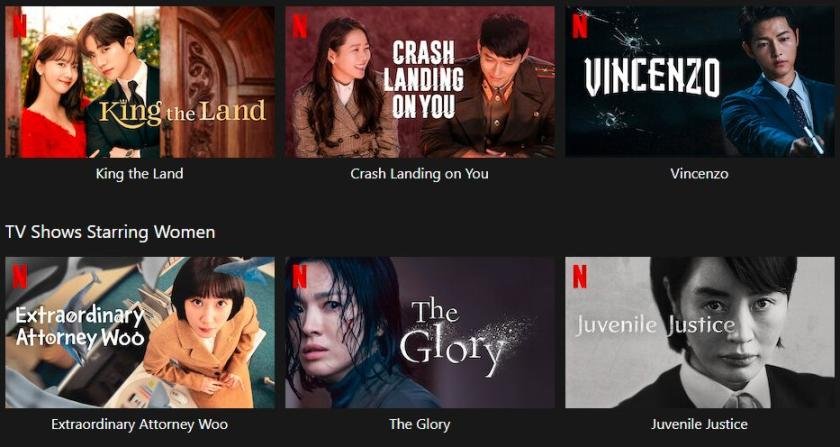Netflix’s early entry into the South Korean streaming market and its aggressive investment in original Korean content have solidified its position as the leading subscription-based online video platform, holding 31 percent of the total subscriber base.

Yet, new data from Omdia underscores a shifting competitive dynamic: collectively, domestic players now command a larger 40 percent market share, led by Tving (16 percent), Coupang Play (13 percent), and Wavve (11 percent). This signals a critical juncture for Netflix and the broader streaming landscape in South Korea.
Netflix is investing $2.5 billion in South Korean content over the next four years, according to a report from Business Today. This investment is double the amount they have invested in the Korean market since 2016. This investment aims to support the creation of Korean TV series, movies, and unscripted shows.
Netflix’s Strategy: Global Dominance, Local Adaptation
Netflix’s success in Korea has been largely driven by its ability to tap into the K-content phenomenon, producing and distributing globally acclaimed Korean dramas and films such as Squid Game, The Glory, and Physical:100. Its content strategy is two-pronged: invest heavily in high-quality, exportable Korean originals while leveraging its global distribution platform to maximize international reach.
This approach has not only bolstered Netflix’s subscriber base but also helped position it as a key player in globalizing Korean pop culture. However, this strategy comes with inherent vulnerabilities: a heavy reliance on global hits, the rising costs of premium content production, and growing regulatory scrutiny, particularly as local platforms demand a greater share of the K-drama market.

Domestic Platforms: Strengthening Local Ties, Global Ambitions
The resilience of Korean platforms like Tving, Coupang Play, and Wavve highlights the strength of cultural alignment and strategic differentiation. Tving’s ambitious global expansion plans — supported by CJ ENM’s KRW 1.15 trillion (~$812 million) content investment — demonstrate an increasingly assertive approach. By focusing on partnerships in the US, Japan, and Southeast Asia, Tving aims to replicate the success of K-content internationally while retaining a firm hold on the domestic market.
Coupang Play, though smaller in original content, has differentiated itself through strategic partnerships with Paramount, Warner Bros. Discovery, and HBO, enabling access to popular international franchises. This strategy aligns with Coupang’s broader ecosystem play, tying its streaming service to its e-commerce membership base, thereby creating a vertically integrated value proposition that competitors like Netflix lack.
The potential merger between Tving and Wavve, if finalized, could significantly alter the competitive landscape. A consolidated domestic giant would command substantial scale, potentially rivaling Netflix’s dominance and fostering a stronger Korean streaming identity in both domestic and international markets.
The Future: A Competitive, Hybrid Ecosystem
The Korean streaming market is increasingly characterized by a hybrid competition: global platforms like Netflix offering localized content for international audiences, while domestic players strengthen their position through local cultural affinity, exclusive partnerships, and global aspirations.
While Netflix retains its lead in individual subscriber share, its dominance is no longer unassailable. The growth of domestic platforms signals a more balanced competitive environment, driven by factors such as:
Content localization vs. global appeal: Can Netflix continue to produce globally resonant Korean content at scale, or will local platforms reclaim this space?
Partnerships and ecosystem integration: Coupang Play’s bundling strategy and Tving’s collaborative production model could offer sustainable advantages.
Global ambitions of Korean platforms: Tving’s international expansion, supported by strategic alliances, suggests that Korean platforms may not remain purely domestic players.
Conclusion
Netflix’s ability to sustain its leadership in Korea will hinge on its agility in navigating an increasingly complex market — where local players are no longer just fast followers but formidable innovators and global aspirants. As the Korean wave continues to captivate global audiences, the battle for streaming dominance in South Korea is evolving into a microcosm of the larger global streaming wars: a contest not just of scale, but of culture, partnerships, and strategic foresight.
TelecomLead.com News Desk
